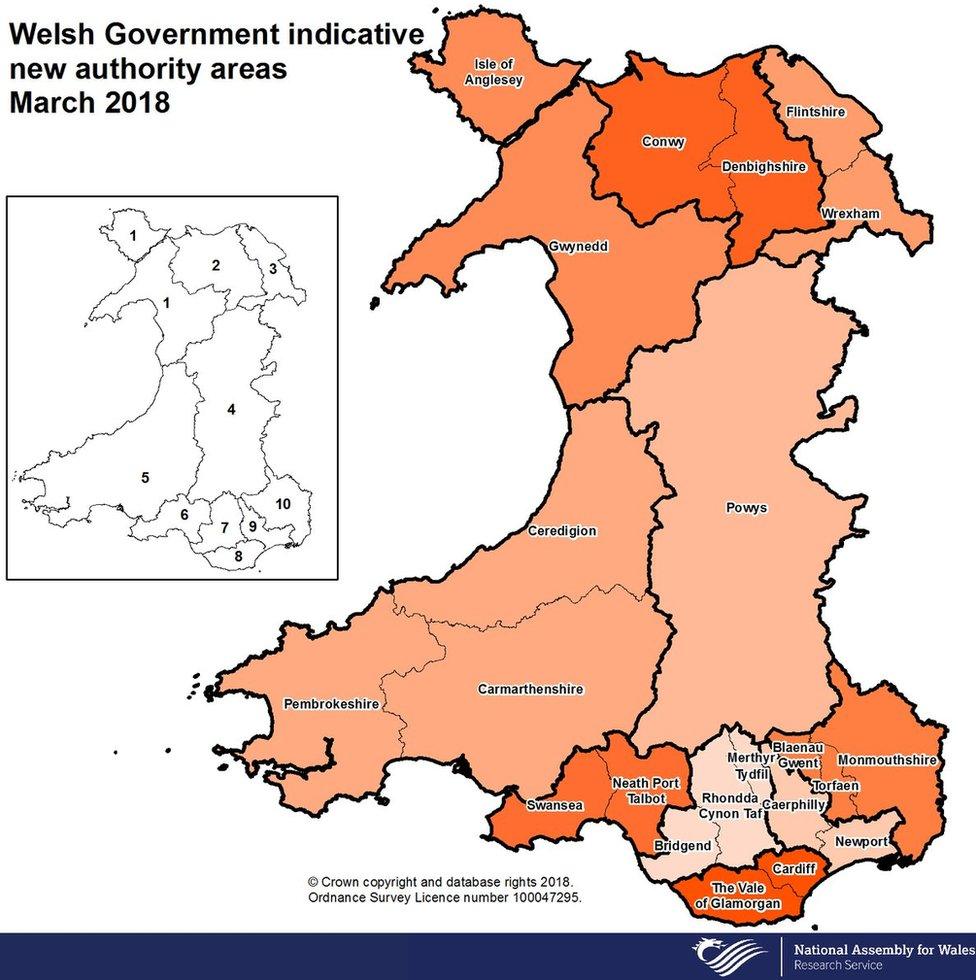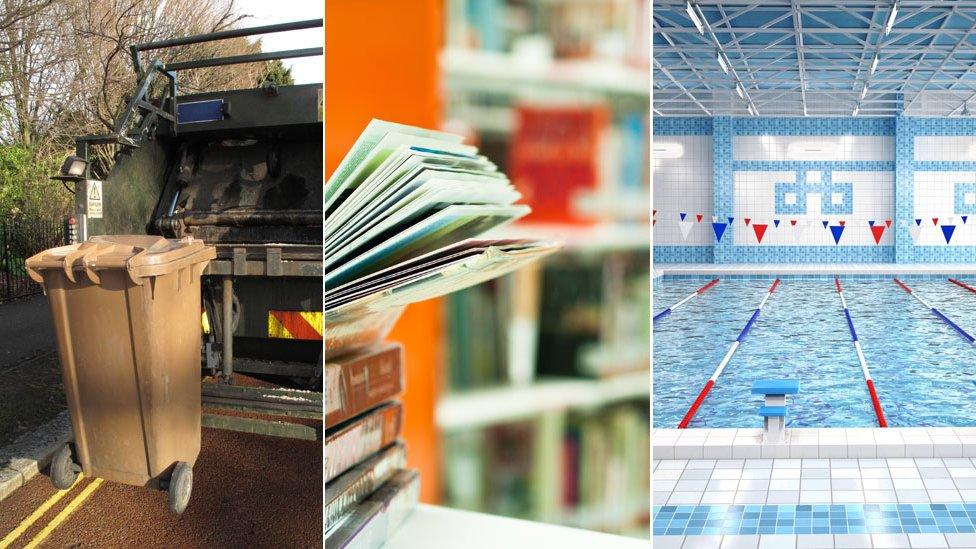Ministers propose reducing number of councils from 22 to ten
- Published
Alun Davies says reform goes "wider and deeper" than cutting the number of councils
Plans that could see Wales' 22 councils merged to as few as ten have been resurrected by the Welsh Government.
The last set of merger plans had been scrapped after the 2016 assembly election in favour of regional joint working, which has now been dropped.
Local Government Secretary Alun Davies said radical change is needed.
But the announcement was greeted with "disquiet and confusion" in the sector, according to the Welsh Local Government Association (WLGA).
Voluntary mergers or a phased approach are among the options being considered.
Mr Davies said: "Wales needs strong, effective, empowered local authorities which can weather continued austerity and build local democratic structures fit for future generations.
"I do not believe that our local authorities, as currently constituted, can fully play this role; and I am not alone.
"Councils have been clear that services are wearing down to the point of collapse and there is a general acceptance that things cannot carry on as they are and a general acknowledgement that more money, even if it were available, would not solve the problem."

The Welsh Government's proposals could leave Wales with ten councils
But a statement from the WLGA appeared to reject the proposals.
"Local government was already responding proactively to the previous reform programme of regional collaboration and is progressing with the City and Growth Deal agenda.
"Consequently, this announcement has caused disquiet and confusion. It has arrived midway through the assembly term and following the recent WG assurance that no reorganisation would occur for 10 years."
The body added: "Merging authorities on the breadline to create larger authorities without the necessary resources is not a sustainable solution to the problems councils face."

Analysis by Nick Servini, BBC Wales political editor
This is a softly-softly approach to council re-organisation from Alun Davies that stands in stark contrast to the "big stick" method that failed previously.
That said, there will still be pressure put on local government, albeit in a more subtle way.
The message to council leaders is that austerity has called into question their financial viability, and if they reject the Welsh Government attempt to deal with those pressures through re-organisation, then they need to come up with alternative solutions.
There is a chance this begins a process that could end with fewer than the existing 22 councils. The key question is whether it will bring the numbers down to anything like the 10 that has been suggested by ministers.

In the Senedd, Plaid Cymru local government spokeswoman Sian Gwenllian called it a "far reaching U-turn" and said the proposals were very similar to a map showing eight or nine authorities proposed by former local government minister Leighton Andrews.
She described the matter as a "saga" and a "farce", adding: "I would like to ask how council mergers will attract support this time when it failed last time to do so."
Welsh Conservative local government spokeswoman Janet Finch-Saunders said: "This will now be the third attempt and announcement that that there's an intention to gerrymander - I mean reorganise - local government."
She added: "This is a political reform. It is not about bringing good services to people."

Gareth Bennett, of UKIP, said: "Residents in largely rural Monmouthshire may well have genuine concerns about the proposed merger with the two eastern valleys councils of Torfaen and Blaenau Gwent."
"There may be concern too in the Vale of Glamorgan about the proposed merger with Cardiff - a major problem there being that Cardiff is an expanding city in population terms, and the planners in Cardiff would dearly love to get their hands on the remaining green fields of the Vale", he added.
Merger partners
A green paper proposes ten possible new council areas, which would result in the mergers of:
Isle of Anglesey and Gwynedd
Conwy and Denbighshire
Flintshire and Wrexham
Ceredigion, Pembrokeshire and Carmarthenshire
Swansea and Neath Port Talbot
Bridgend, Rhondda Cynon Taf and Merthyr Tydfil
Vale of Glamorgan and Cardiff
Newport and Caerphilly
Torfaen, Blaenau Gwent and Monmouthshire
Powys would remain unmerged under the proposal. The new authorities would be aligned with health board boundaries, with plans for Bridgend to come under the Cwm Taf health board.
The Welsh Government proposes three options - allowing authorities to merger voluntarily, a phased approach that would allow early adopters to merge in 2022 with others doing so by 2026, or a single merger programme taking place in 2022.
- Published6 March 2018

- Published28 February 2018

- Published8 March 2018

- Published10 October 2017

- Published4 October 2016
